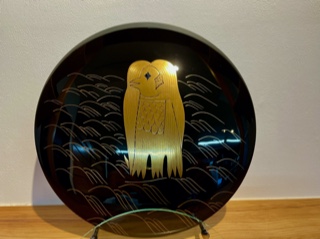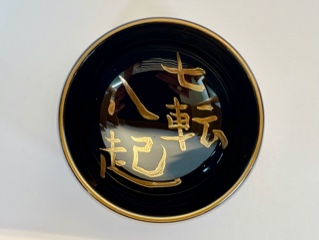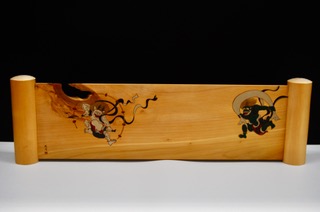MONTHLY LETTER
| 01 | 02 | 03 | 04 | 05 | 06 | 07 | 08 | 09 | 10 |
06
The TM JAPAN ART STUDIO:
Art During A Time of Crisis
Art that is being created during this pandemic reflects homage to tradition as well as vision for the future. That look back and look forward are bringing about new ways of seeing. It seems likely that we will learn to live with these changes. Artists also show us how to adapt to what’s new. Takeshi Matsuyama shares his work and the ideas that are part of what is changing.
Answer: In the last year and a half, since the pandemic started, I have had lots of thoughts and feelings about what it is, and what is taking place. Compared to World War Two, or the Tohoku earthquake or the Kobe earthquake, I feel really lucky. I feel lucky because I have my family, my home, and food to eat each day. Of course, I’m worried about the future, but I try to stay positive.
A: The art sustains me. I can concentrate on what I really want to create, and challenge myself with new ideas.

A: This Amabie is an example. It is a Youkai that has been handed down in Japan and is said to have appeared in Kumamoto, Kyushu in 1846. It predicts abundant crops and plagues and protects them from plagues. So, I drew an Amabie and dedicate it to those to whom indebted on a daily basis.
A: I likened the cylindrical acrylic to the earth, and made it in the hope that the pandemic would fit in and be peaceful. The South Pole drawn on the bottom is represented by mother of pearl.

A: It’s inspired by the Japanese proverb, “nanakorobiyaoki,” which translates to, “If you fall seven times, you will stand after the eighth fall.” The shape of the sake cup shows that. Even if tilted, it returns to the original position. And it implies that the bearer of the cup will rise after a fall. I drew the proverb in Kanji on the inside of the sake cup.

A: The barrier, also known as kekkai, exists in Japan. Translated literally, it’s a barrier, but it has a deeper meaning such as separating the sanctuary from the unclean world. And limiting the world so that it is not disruptive. I drew the wind god and the thunder god there. Both are gods who protect us from disasters.